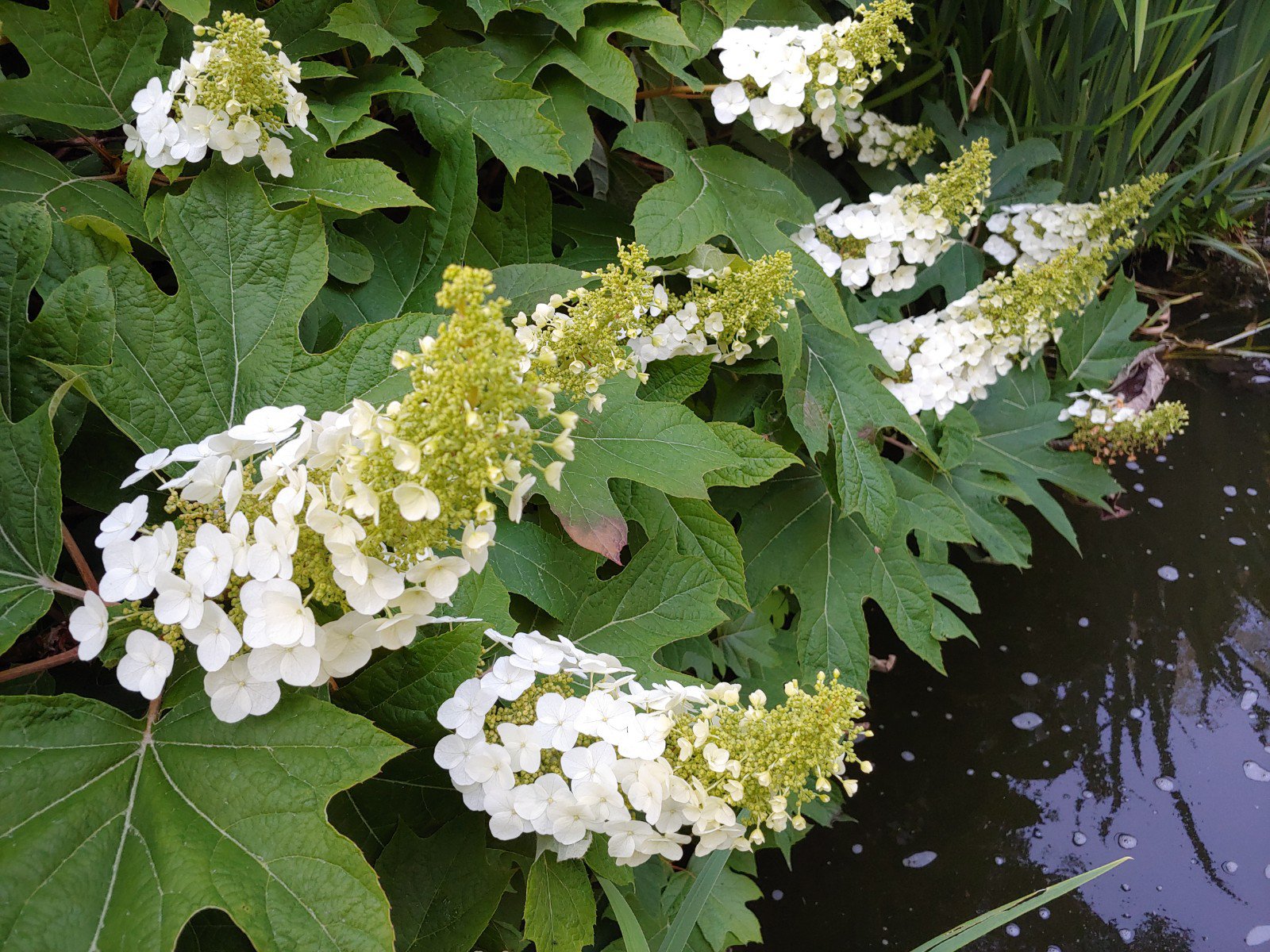Of all the treasures seen on a too quick run through the Chicago Botanic Garden, a Seven Son tree (Heptacodium micioniodes) caught my eye, reminding me of the tree lost in a storm several years ago. I’ve thought many times about planting another, but never found the right tree. In a well established garden, a tiny tree just won’t work, and after the Seven Son was replaced with a Red Horse Chestnut (Aesculus × carnea) a bit of reconfiguring would be necessary to fit it in. I don’t regret planting the horse chestnut, and I was nearly over the disappointment of losing the Seven Son, until yesterday.

The vigorous growth and multiple trunks of the Seven Son gave me confidence, when the tree was snapped at the ground in a downburst that toppled many area trees in its path, that it would grow back from the roots. Surprisingly, it didn’t, and today, seeing one with calyces in full color, reminds me that changes can come quickly in the garden.
A few days ago, winds in a brief storm brought down several substantial limbs from tulip poplars and swamp maples that border the garden. This isn’t unusual with trees in the forest, and only once was I out in the garden to witness what was nearly a hydrangea crushing accident (that could also have been bone crushing). This is a part of the garden to avoid when the wind is blowing, better to come back later to clean up the debris, but not before scanning the tree canopy for dangling limbs.

With a few trees and large parts of others falling, the degree of sunlight in this deeply shaded part of the garden changes regularly, mostly very slightly, but the loss of a larger tree opens a significant window to the sun. A few plants suffer with a bit more sunlight, but fortunately, the slight increase has mostly been beneficial. Oakleaf hydrangeas doubled the number of blooms, and spring flowering camellias are again loaded with buds.
I planted a Seven Son tree about 10 years ago, and love the fact that I get lots of fragrant blooms beginning September 1st (here in Nashua, NH). The bees are crazy about this tree, and I like the peeling white bark. Unfortunately, little critters like chipmunks and squirrels do too, as they gnaw every shred of bark from this tree, presumably for nesting material. Fortunately this activity hasn’t hurt the tree. But to restore the attractive bark, I’ve had to surround the first 4 feet with a fence of chicken wire. I wonder if you’ve had that problem too.
There were lots of bees, but I expect forest trees were adequate for home building. Rabbits are becoming a problem, but squirrels only when they chew wiring in the attic. Once, I saw chipmunks regularly around the koi pond, but I suspect it is snakes that now cause only rare sightings.
This looks like a great addition to our landscape! And now would be a good time to plant a Seven Son Tree/Shrub. Where can I get one? (I’ve not had luck with many on line plant purchased.) Do you have any recommendations? Thank-you & than-you for all of your garden adventure postings!
Several years ago I saw one in a shrub form in a three gallon pot. I’d already planted the hotse chestnut, so I didn’t know where to put it. Two years ago I bought one mailorder, planted it in a pot figuring some place would open up by the time it was too big for the container. I didn’t protect it in the winter, and killed it. I don’t know where to get anything larger than a quart container now, but if I find one I’ll jam it in somewhere.
Is a swamp maple Acer negundo or Acer saccharinum? Acer negundo is a native here, but rather weedy and prolific. Acer saccharinum is a rare exotic. It is really more unpopular than rare. It gets too big, lacks color, and has potential to be structurally deficient. Nonetheless, it happens to be one of my favorites.
Acer rubrum is red maple, though autumn leaf coloring is more commonly yellow, or swamp maple. This is our most common native fotest tree, and cultivars with dependable red leaves in autumn are the most popular landscape trees.
That is one I would not have guessed. Maples are unpopular here, but the cultivars of red maple happen to be good street trees.
Unfortunately, Japanese maples are stupidly popular here, but dislike the arid climate. People plant them as shade trees, even though they barely get taller than first floor eaves.